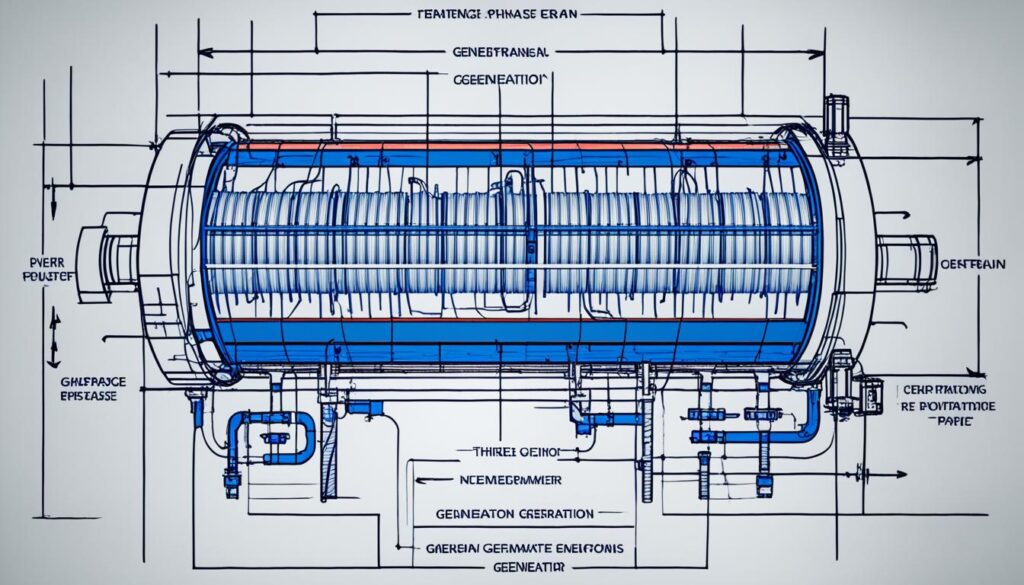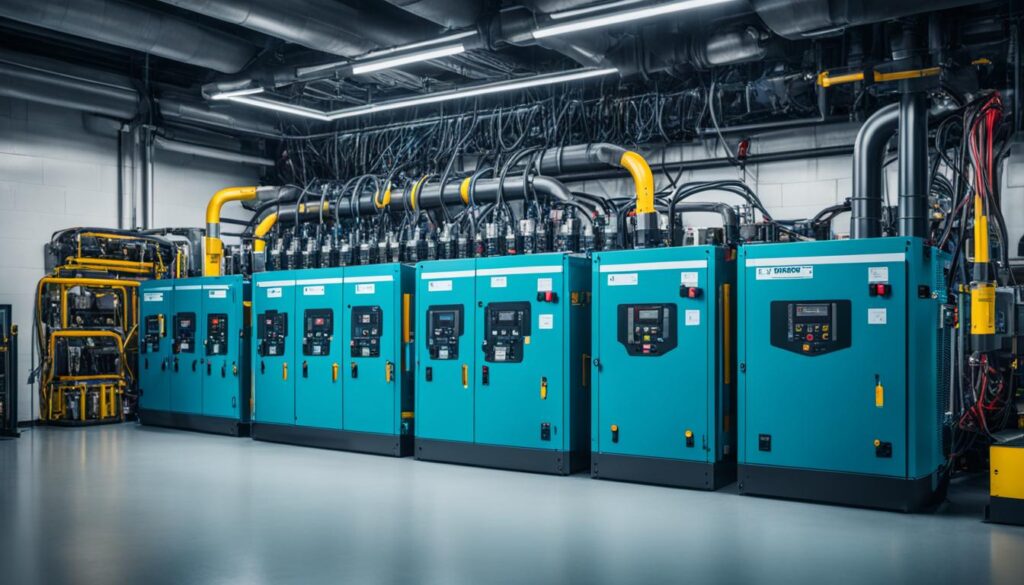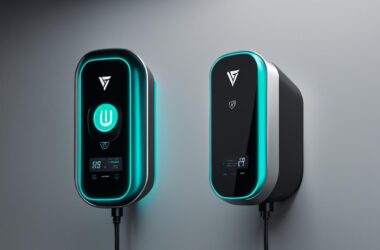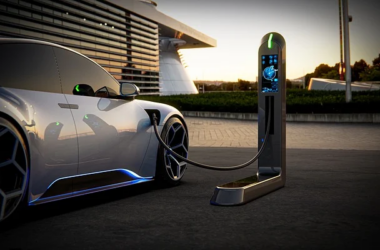Are you considering switching to three-phase power? If so, you’ve come to the right place. In this guide, I will walk you through the process of getting three-phase power, from installation to connection. Whether you’re a business owner looking to power heavy machinery or a data center operator in need of a reliable power supply, understanding the ins and outs of three-phase power is essential.
Installing three phase power is not as complicated as it may seem. With the right expertise and proper planning, you can ensure a smooth transition to this efficient power system. From determining your power requirements to selecting the appropriate electrical equipment, I will provide you with the step-by-step instructions you need to make the switch.
Once your three-phase power system is installed, you’ll enjoy numerous benefits. By utilizing all three phases, you’ll have a more balanced power supply, resulting in increased efficiency and reliability. This means you can power heavy electrical loads without overwhelming circuits.
Are you ready to explore the world of three phase power? Let’s dive in and discover the countless applications and advantages this system has to offer. From industrial machinery to data centers, three phase power plays a vital role in powering our modern world.
Key Takeaways:
- Installing three-phase power involves careful planning and selecting the appropriate electrical equipment.
- Three-phase power offers increased efficiency and reliability, making it ideal for powering heavy electrical loads.
- From industrial machinery to data centers, three-phase power is crucial for various applications.
- Switching to three-phase power can lead to cost savings and a more balanced power supply.
- Consulting with a professional can help ensure a smooth transition to three-phase power.
Understanding Three-Phase Power
Three-phase power is a type of polyphase system that is commonly used for alternating current power generation, transmission, and distribution. It is the most common method used by electric grids worldwide to transfer power. This system utilizes three current-carrying conductors, known as phases, which are spaced 120 degrees apart. The power that enters a property, such as a data center, is usually three-phase AC power. In this system, the current alternates periodically and is delivered through three separate conductors, resulting in a more efficient and reliable power supply.
One of the key advantages of three-phase power is its ability to handle higher electrical loads compared to single-phase power. The balanced distribution of power across three phases makes it ideal for running heavy machinery and equipment in industrial and commercial settings. In addition, three-phase power provides a more steady and reliable power supply, reducing the risk of power interruptions and voltage fluctuations.
Electric grids rely on three-phase power to efficiently transmit and distribute electricity over long distances. By utilizing multiple phases, electric grids can supply power to a large number of consumers without significant power losses. The three-phase power system also allows for better control and management of power flow, ensuring a stable and reliable electrical supply.
Three-phase power is the backbone of electric grids, providing a robust and efficient method for power transmission and distribution. Its widespread use in various industries highlights its importance in powering critical infrastructure and supporting economic growth.
To further understand the concept of three-phase power, it’s essential to explore the characteristics of each phase. The three phases, namely Phase A, Phase B, and Phase C, carry alternating current at different points in time. These phases are denoted by their angular positions as 0, 120, and 240 degrees, respectively. The alternating nature of the current ensures a smooth and continuous flow of electrical energy.
Advantages of Three-Phase Power
Three-phase power offers several advantages over single-phase power:
- Higher power capacity: Three-phase power can handle larger electrical loads, making it suitable for running heavy machinery and industrial equipment.
- Efficient power transmission: The balanced distribution of power across three phases reduces power losses and ensures efficient electricity transmission over long distances.
- Reliable power supply: Three-phase power provides a steady and reliable power supply, minimizing the risk of power fluctuations and interruptions.
- Cost-effective wiring: The use of three-phase power requires fewer conductors compared to single-phase power, resulting in cost savings in wiring installations.
With its numerous advantages and widespread use, three-phase power plays a vital role in powering various industrial, commercial, and residential applications. Understanding the fundamentals of three-phase power is essential for both professionals in the electrical industry and individuals seeking a deeper knowledge of electrical systems and power distribution.
| Advantages of Three-Phase Power | Description |
|---|---|
| Higher power capacity | Can handle larger electrical loads, suitable for heavy machinery and industrial equipment. |
| Efficient power transmission | Reduced power losses and efficient transmission over long distances. |
| Reliable power supply | Steady and reliable power supply with reduced risk of fluctuations and interruptions. |
| Cost-effective wiring | Requires fewer conductors, resulting in cost savings in wiring installations. |
Generating Three-Phase Power
Generating three-phase power involves the use of a magnet and three wires. Let me explain the process in a simplified example. Imagine positioning the north positive end of a magnet at one of the wires, which we’ll call “line one.” As the magnet spins, its position affects the current flowing through each wire. When the magnet is perpendicular to a wire, the current in that wire stops flowing. However, as the magnet continues to move, the current alternates in each wire, resulting in a continuous flow of power.
To ensure a balanced distribution of power, the three wires, also known as phases, are equally spaced around a circle. This arrangement allows for the efficient flow of electricity throughout the system. By maintaining this balance, three-phase power generation enables the reliable operation of various electrical equipment and machinery.
Here’s an example of how the magnet, wires, and current flow work together:
Magnet Position
Wire Current Flow Line One No current flow Line Two Current flows Line Three No current flow
The above table illustrates the current flow in each wire when the magnet is positioned in a specific way. As the magnet continues to spin, the currents in the wires will shift accordingly.
Generating three-phase power is a fundamental concept in electrical engineering and plays a crucial role in various applications. Now that we understand how three-phase power is generated, let’s explore the benefits it offers and its wide range of applications.

Benefits of Three-Phase Power
Three-phase power offers numerous benefits over single-phase power, especially in industrial and commercial settings where heavy electrical loads are common. One of the main advantages is its power efficiency, allowing larger machinery and equipment to run more efficiently. The balanced distribution of power in a three-phase system ensures that higher electrical loads can be handled without overloading circuits, resulting in smoother and more reliable operation.
Furthermore, three-phase power systems offer significant benefits in terms of power transmission. Compared to single-phase systems, they require less conducting material to transmit the same amount of power, making them more cost-effective. This not only reduces infrastructure costs but also minimizes energy losses during transmission, leading to greater overall power efficiency.
Let’s take a closer look at these advantages in a table:
| Benefits of Three-Phase Power | Description |
|---|---|
| Power Efficiency | Allows larger machinery and equipment to run more efficiently |
| Handling Heavy Electrical Loads | The balanced distribution of power prevents overloading circuits |
| Cost-Effective Power Transmission | Requires less conducting material compared to single-phase systems |
By harnessing the benefits of three-phase power, industries can optimize their electrical systems and enhance productivity. Whether it’s powering heavy machinery, running manufacturing processes, or operating large-scale equipment, three-phase power provides the reliability, efficiency, and cost-effectiveness required for demanding industrial applications.
In the next section, we’ll explore the various applications of three-phase power and how it contributes to the success of diverse industries.
Three-Phase Power Applications
Three-phase power plays a crucial role in various applications, providing the necessary electrical capacity to power industrial machinery, data centers, and other power-hungry equipment. Its ability to efficiently support heavy electrical loads makes it an ideal choice for these demanding environments. Let’s explore some key applications and the benefits of using three-phase power.
Industrial Machinery
The use of three-phase power is essential in running industrial machinery. This includes large motors, compressors, pumps, and other equipment commonly found in manufacturing facilities, warehouses, and processing plants. Three-phase power provides the necessary electrical capacity to ensure reliable and efficient operation, enabling industries to meet their production demands.
Data Centers
Data centers rely heavily on three-phase power to support the complex infrastructure required for their operations. From powering racks of servers to high-density computing systems, three-phase power ensures a constant and reliable power supply. This is crucial to maintain optimal performance, prevent downtime, and safeguard critical data.
Power-Hungry Equipment
Three-phase power is especially beneficial for equipment that requires a substantial amount of electrical power. This includes power-hungry equipment such as large HVAC systems, industrial pumps, and high-capacity air compressors. The continuous and efficient power supply provided by three-phase systems ensures the smooth operation of these devices and prevents disruptions.
| Application | Benefits |
|---|---|
| Industrial Machinery | Efficiently powers large motors, compressors, and pumps |
| Data Centers | Provides reliable power supply for servers and computing systems |
| Power-Hungry Equipment | Enables efficient operation of HVAC, pumps, and compressors |
Three-phase power applications encompass a wide range of industries and settings, demonstrating its versatile capabilities. It’s the preferred choice for powering industrial machinery, providing essential electrical capacity for data centers, and ensuring optimal performance of power-hungry equipment. The reliable and efficient power supply of three-phase systems is essential for sustaining productivity, preventing downtime, and meeting the demanding requirements of today’s power-intensive environments.
Three-Phase Power Conversion
Converting three-phase power to single-phase power can be achieved through various methods. One common approach is utilizing a three-phase power converter, which converts the three-phase AC power to single-phase AC power. This conversion enables the utilization of single-phase power for specific applications that do not require the full capacity of three-phase power.
By converting the power supply from three-phase to single-phase, businesses and residential properties can take advantage of the benefits that single-phase power offers. This includes the ability to power equipment and devices that are designed to operate on single-phase power.
When calculating the voltage for a three-phase system, a specific formula is used. The voltage for each phase is determined by multiplying the volts by the square root of three. This calculation ensures accurate power supply and enables proper voltage management within the three-phase system.
Converting three-phase power to single-phase power is essential for utilizing power supply efficiently and catering to specific applications that do not require the full capacity of three-phase power.
In summary, three-phase power conversion involves transforming the power supply to a single-phase configuration, providing flexibility and compatibility with single-phase equipment. The voltage calculation ensures accurate power supply within the three-phase system, resulting in efficient and reliable power delivery for various applications.
Three-Phase Power Generation Methods
Generating three-phase power requires various methods, which include traditional power generation systems as well as renewable energy sources. These methods are crucial for ensuring power reliability and availability, allowing power generation companies to efficiently distribute electricity through three-phase power systems.
“Power generation companies ensure power reliability and availability by utilizing three-phase power systems for efficient electrical distribution.”
One common method of generating three-phase power is by converting mechanical energy into electrical energy. This process involves using turbines, generators, and other equipment to transform the movement of water, wind, or steam into electrical power. The generated electrical energy is then transmitted through the three-phase grid, ensuring a consistent and stable power supply for residential, commercial, and industrial consumers.
Renewable energy sources like solar and wind power also play a significant role in three-phase power generation. Solar power is harnessed through photovoltaic panels, which convert sunlight into electrical energy. Similarly, wind turbines capture the kinetic energy of the wind and convert it into electricity. These renewable energy sources contribute to reducing carbon emissions and promoting a sustainable power generation system.
“Renewable energy sources like solar and wind power play a significant role in three-phase power generation.”
By utilizing a combination of traditional power generation systems and renewable energy sources, power generation companies can meet the increasing demand for electricity while ensuring a reliable and available power supply. This diverse mix of generation methods promotes a sustainable energy future and reduces dependence on finite resources.
Advantages of Three-Phase Power Generation Methods
- Enhanced Power Reliability: Three-phase power generation methods provide a more reliable and stable power supply, reducing the risk of power outages and disruptions.
- Increased Power Availability: By utilizing various generation methods, power companies can ensure a sufficient supply of electricity to meet the demands of residential, commercial, and industrial consumers.
- Promotion of Sustainable Energy: Incorporating renewable energy sources in three-phase power generation methods reduces greenhouse gas emissions and supports a cleaner and greener energy future.

Conclusion
In summary, three-phase power offers numerous benefits compared to single-phase power, making it the ideal choice for a wide range of industrial, commercial, and data center applications. The efficient transmission and distribution capabilities of three-phase power enable it to handle heavy electrical loads and power-hungry equipment with ease. Its balanced power distribution ensures optimized performance and reliability.
One of the key advantages of three-phase power is its cost-effectiveness. Due to the balanced power distribution, three-phase systems require less conducting material, resulting in lower wiring costs. This makes it a more efficient and economical solution for power transmission.
Furthermore, three-phase power plays a crucial role in various applications such as running industrial machinery, operating data centers, and powering equipment that requires a consistent and reliable power supply. Its ability to handle large motors, compressors, and high-density computing systems makes it an indispensable choice in these settings.
In conclusion, the benefits of three-phase power, including efficient transmission, lower wiring costs, and its wide range of applications, make it the preferred method for powering heavy electrical loads. Its reliability and optimal performance ensure a stable power supply, making it an essential component of modern power systems.









